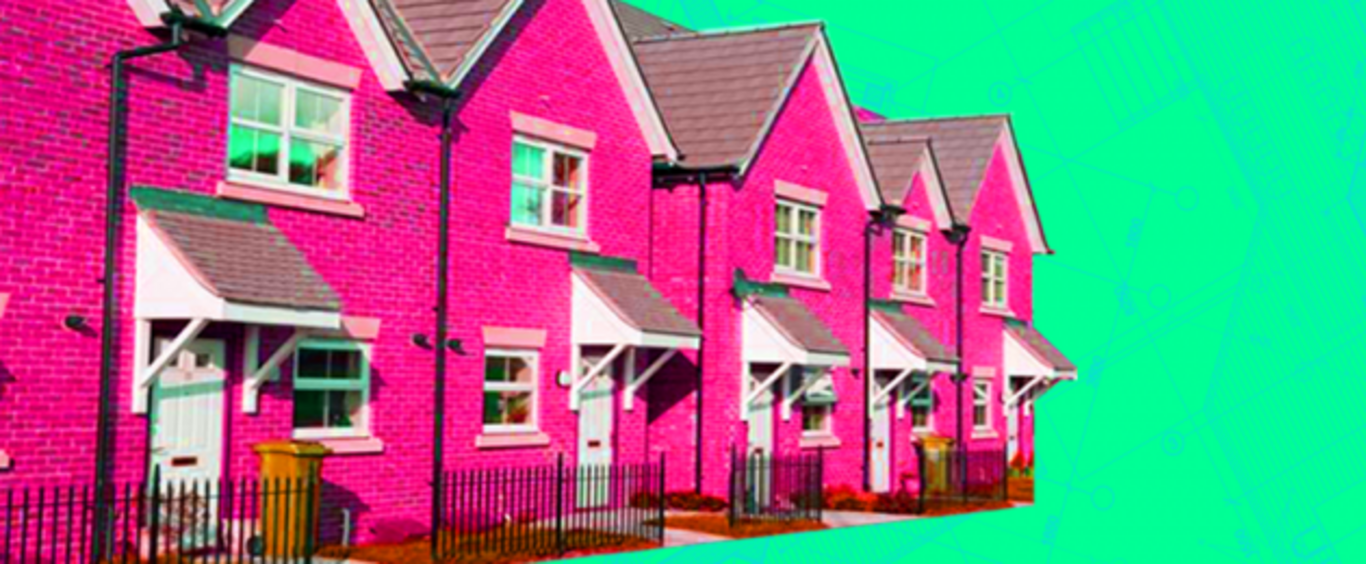Dublin council depot sites could deliver over 1,000 homes - so why are we waiting?
A commitment not to sell off valuable sites has been welcomed – but it will be years before housing is actually built.

ON A COBBLESTONE street in Stoneybatter, disused tram tracks spider their way under a large metallic gate.
Beyond light blue railings, several red fire engines sit in the large car park.
Stanley Street has been a council depot since the early 1900s and the tram tracks were part of that system.
Rubbish and street sweepings collected from the streets of the neighbourhood were brought here by horse and cart during the day and then later, at night time, special wagons trundled along those tracks carrying the waste out to Fairview for disposal.
A black and white photo of a giant litter bin outside the Stanley Street depot dates from 1959 – it reads ‘cleaner streets please’.
Now, in 2019, the Stanley Street council depot is used by Dublin Fire Brigade as a garage, for storage and maintenance of their equipment.
But that will soon change as the council has plans to transform this site into a public housing development, providing 275 new social and affordable homes here.
Elsewhere across the city, long-standing council depots are also earmarked to become sites for scores of new homes. The current estimate proposed across those site is for 1,178 housing units.
The emphasis of those developments will be on providing social and affordable housing, says Brendan Kenny, Deputy Chief Executive of Dublin City Council with responsibility for housing.
The council doesn’t have much vacant land left, he says.
“The depot sites are probably the last opportunity we have, it would be our strong view that they should be used for social housing.”
“It is a godsend to us,” he says, sitting in Dublin City Council’s Civic Offices, off the Quays in the city centre.
Kenny didn’t always hold that view, however. Until recently the council management had intended to sell some of the sites.
Dublin City councillors baulked at that idea and insisted that in light of the housing crisis the depot sites should be used for social and affordable housing. A new agreement between councillors from Fianna Fail, the Green Party, Labour and the Social Democrats has given a commitment that none of the depot sites will be sold.
Opposing the sale of public land is the most important part of that agreement, says Social Democrat councillor Gary Gannon. “I will not be complicit in the sale of any public land,” he says.
“The last five years have been a spectacular failure in terms of the delivery of social and affordable homes in the city,” says Fianna Fail councillor Mary Fitzpatrick. She intends to see that turned around in the next council term.
So these depots are all going towards delivering houses, right?
The council has 33 depots scattered around Dublin.
The depots are mostly bases for cleaning staff and housing maintenance staff, a couple are recycling centres, fire brigade maintenance, waste-water treatment – you get the drill.
But Dublin City Council has big plans to merge those operations into two ‘super-depots’; one on the northside in Ballymun and one on the southside in the Liberties.
Seven of the depots are still needed by the council for their operations and others are rented and will be handed back to their owners.
Three of the sites are located in industrial estates and could potentially be developed as housing down the line says Kenny, but they would only be suitable for homes if the entire site was being redeveloped for housing.
Last July the council management presented plans to use six of the sites for social and affordable housing and to sell some others but then following concerns raised by councillors, they said last September that most of the available sites would be used for social and affordable housing.
Now they say that almost all of the sites that are freed up by the consolidation will be used for social and affordable homes – none will be sold off – but that there could be potential for “mixed use” on some sites, says a council spokesperson.
What we are left with is 16 of the depots, which are located across 14 separate sites, as these are the ones that will be developed to provide 1,178 new homes for the city.
We have mapped them here, with the size of the location icon proportionate to the number of housing units which is estimated could be built there.
https://public.flourish.studio/visualisation/428517/
Click here if you are having interacting with this map. (Clicking on the icons will reveal the number of houses proposed for each site.)
On some of the sites, including the Forbes Lane and Marrowbone Lane sites in the Liberties (which is made up of three depots across two sites) and Gulistan Terrace in Rathmines, the housing will form part of larger developments including civic and community spaces. In the case of Gulistan Terrace, for example, there is a proposal that a primary care health centre would be built alongside civic space and over 100 homes.
One large site, at Bannow Road in Cabra is not being retained for operational use but nor is it scheduled for housing development. Official council documents state that it is being “retained pending opportunity for future comprehensive redevelopment”.
Tick tock: in a housing crisis, why are we waiting?
The housing crisis is at boiling point and so the clock is ticking. “The pressure is on to do it,” says Kenny.
However, before any housing can be built on the depot sites the ‘super-depots’ need to be constructed.
The super-depot for the northside of the city, beside Ikea in Ballymun, will be finished in around two years’ time, says Kenny and he hopes to bring a masterplan to councillors this summer, he says.
“The idea would be that as soon as staff move into the new depots, we will be ready to go,” he says.
On the other hand in the southside, the construction of the super-depot at Marrowbone Lane is a much more complex project that will take five or six years to complete, he says.
The council needs to create a masterplan for that site in the Liberties which will include sports facilities, a civic space and housing as well as the new super-depot. That means that the housing on the depot sites on the southside won’t be progressed until 2025.
As this depot is in the middle of a residential area Kenny expects it will attract lots of objections. “We will get opposition left, right and centre,” he says.
One of the main things that can hold up housing construction is objections from members of the public.
There are other problems too.
Dublin City Council has been talking about building on several other sites they own for years but those plans have yet to materialise.
After years of issues and delays, the council management finally brought formal plans to councillors in January 2017 for the development of O’Devaney Gardens, near Stoneybatter, as well as two other large sites in Inchicore and Coolock. The three sites are known collectively as the ‘land initiative sites’.
“We only got approval for the land initiative sites in January 2017,” says Kenny.
They hope to appoint a builder for O’Devaney Gardens in the coming weeks, he says, and for the Coolock site (Oscar Traynor Road) in September. “That is coming up to three years ago so that is not bad,” he says.
Despite the fact that there is still not a shovel in the ground on any of the land initiative sites, he is serious.
“It’s a horrendous process,” he explains. “You have to go through the process, planning, design, objections, public procurement, cost benefit analysis, environmental analysis.”
A lot of the regulations were introduced for the right reasons, like transparency and to cut out bad building practices, he says, but they all contribute to delays in building social housing.
We heard a lot about rapid build in the media, but Kenny says that model has only produced 131 new homes to date. The construction is much quicker – but the other elements of the process all still have to be adhered to, he says.
With the depot sites though, the bureaucratic nightmare of trying to draw down the money will be tackled while the super depots are being built, says Kenny.
The government departments ‘getting in the way’
You would imagine that there should be some way to strip back some of that red tape and speed up the process of building houses in the present crisis.
“The Department of Housing needs to get out of the council’s way,” says Patrick Costello, a Green Party councillor. “They have a ridiculously overcomplicated, bureaucratic system. It’s a labyrinth,” he says.
In his view the problem is rooted in political ideology; a view echoed by Fianna Fail councillor Mary Fitzpatrick, who claims that the failure to build housing stems from the Department of Finance and Public expenditure. The government is “ideologically opposed to the state taking a lead on the delivery of public housing”, claims Fitzpatrick.
The Department of Housing says that the State will deliver 50,000 new social homes by 2021.
“At the end of the six-year Rebuilding Ireland programme, we will have reached a point where build, acquisition and leasing programmes will be delivering more than HAP and RAS (rent subsidy schemes) annually,” a spokesperson Department of Housing tells Noteworthy.
A social mix?
A total of 1,032 homes should fit on the depot sites and the council may consider buying adjoining sites if there are any for sale, says Kenny, so the overall total could be higher.
That said, a council spokesperson says that the Gulistan Terrace site in Rathmines in south Dublin (100 homes) might be needed by the HSE for a primary care centre – so that would bring the total down to 932.
Often locals and public representatives say that they want a site developed as mixed social housing and affordable housing, says Kenny. “What they are really saying is that they don’t want social housing,” he says.
Most of the depot sites are small and so those will be developed exclusively for social housing, because on sites of less than 100 units it is not necessary to provide a ‘social mix’.
Creating that social mix can mean extra complications as affordable housing developments have to be funded through loans, while social housing is funded by central government.
Stanley Street is the largest of the council depot sites so it is likely to be developed as mixed social and affordable housing.
Oh Vienna! What the council is leaning towards
In Vienna, the capital of Austria, a city around the same size as greater Dublin, some 62% of people live in publicly subsidised housing and rents are as low as €600 per month for a city centre apartment.
The rent is calculated according to the cost of building the apartment, so while rents are low, the idea is that the rent people pay covers the cost of building and maintenance. Therefore in the long run the state is usually not really out of pocket on these projects.
In Vienna the homes are usually apartments but they tend to be high quality and often come with generous communal outside space.
Professionals, civil servants, tradesmen, shopkeepers, doctors and nurses, as well as elderly and disabled people all take advantage of the housing on offer by the state.
There are subsidies for those who can’t afford the rent.
Kenny says he supports the Vienna Housing Model in theory and the cost-rental housing the council plans to provide is in line with that approach, he claims.
One of the most passionate advocates of the Vienna Housing Model in Dublin City Council is Fianna Fail councillor Mary Fitzpatrick.
Current spending on rent subsidies and emergency accommodation is the biggest financial scandal of our times, says Fitzpatrick. “The national children’s hospital will pale into insignificance,” she claims.
Fitzpatrick has constituents who are approved for more than €2,000 per month on HAP and they still can’t find anywhere to live, she says.
“What does the average worker have to pay to compete?” she wonders.
“Working people are being cut out of the rental market, not just out of the purchasing market, for a home in Dublin city.”
The depot sites and all the other publicly owned land available in Dublin should be used for the Vienna housing model, she says. That means cost-rental housing that is high quality, affordable and supplied by the state.
A political alliance with repercussions for the future?
Back on Stanley Street, this depot site is big and very central, just a couple of minutes walk from Smithfield Square. There is no doubt it’s worth a pretty penny.
Councillors are adamant it will not be sold. Mary Fitzpatrick says: “In a recovering market a lot of speculation goes on and it is great to see economic activity.
“But we need to ensure that the recovery delivers not just for the speculators, but also for the working people of Dublin.”
Fitzpatrick is hoping that the “very strong coalition” on Dublin City Council will be reflected in the next national government. A change of government would certainly mean a massive change in housing policy, she says (unsurprisingly, since she is likely to be a FF candidate for the next general election).
“Historically right from the 1930s it was Fianna Fail that introduced the first housing building programme in the state,” says Fitzpatrick. “That is how Fairview, Marino, Drumcondra and Cabra were all built.”
The cause of the housing problems is ideological, according to Fitzpatrick. “The idea of providing people with homes speaks to our principles of equality of opportunity – if people have a home then they can go to school, they can go to work, they can contribute and they can succeed,” she says.
It is a common refrain that there are few if any significant policy differences between Fianna Fail and Fine Gael with many commentators believing that the two parties are ‘cut from the same cloth’.
Just lately though, left-wing councillors are expressing the view that they do see a difference, and they are placing Fine Gael policies decidedly to the right of Fianna Fail.
“Fianna Fail genuinely believe in some form of collectivism,” says Gannon of the Social Democrats. “Fine Gael are very different they believe in individualism, they believe in the market economy and laissez-faire economics.”
Gannon, also a likely Dail candidate, says that any potential coalition should be about policies. He would be happy to enter a coalition with any party that shares his parties vision for providing a national health service and public housing.
Says Costello, of the Green Party, “Fianna Fail built public housing when they were in government.”
In the meantime, while councillors across at least these three parties are singing from the same hymn sheet, the 16 council depots that could provide a stream of new housing units in the city await development. If a week is a long time in politics, a minimum of two years before shovel can hit soil is interminable for citizens in a hard-pressed property market.
For more about how to support Noteworthy’s work and stories like this one, visit our website.







